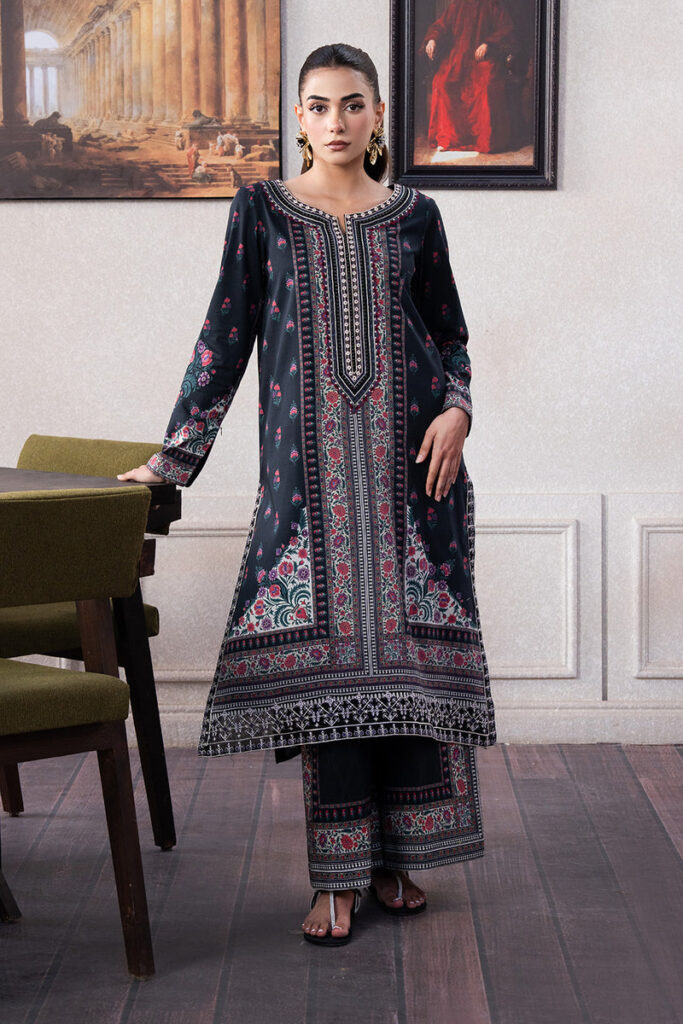The fashion industry has traditionally been known for its fast-paced trends, mass production, and a reliance on physical stores. However, with growing concerns about Essential Clothing sustainability, consumer demand for transparency, and advancements in innovation, technology is increasingly playing a pivotal role in shaping the future of essential clothing. Essential clothing—characterized by timeless designs, durable materials, and versatile styles—benefits from technological advancements that enhance its sustainability, functionality, and efficiency.
This article explores how technology is influencing essential clothing, from the creation of eco-friendly materials to the evolution of shopping experiences and garment production processes.
1. Eco-Friendly Fabrics and Materials Innovation
The rise of sustainable fashion has prompted the development of new materials that are both environmentally friendly and long-lasting. Technology is instrumental in enabling the creation of these fabrics, which play a crucial role in the growth of essential clothing.
a. Bio-Fabrication and Lab-Grown Materials
Advances in bio-fabrication are transforming how textiles are produced. Researchers are developing fabrics that are made from microorganisms, such as bacteria or fungi, which can create biodegradable materials without the need for traditional farming or petroleum-based processes. For example, mycelium, the root structure of mushrooms, is being used to create a sustainable leather alternative, while algae-based textiles are emerging as a sustainable option for clothing production. These bio-engineered materials are not only eco-friendly but also highly durable, aligning with the essence of essential clothing—longevity and minimal environmental impact.
b. Recycled Materials
Recycled textiles are a significant focus for essential clothing brands that are committed to reducing waste. Advancements in technology are making it easier to recycle materials like polyester, nylon, and cotton into new fabrics. Companies now use chemical recycling techniques to break down old garments into their raw fibers, which can then be re-spun into new yarns. This process reduces the need for virgin materials, cutting down on resource consumption and pollution.
c. Smart Textiles
Smart textiles, also known as e-textiles, are fabrics that can interact with external stimuli or the environment. These fabrics can offer benefits such as moisture-wicking, temperature regulation, and UV protection. For essential clothing, smart textiles could enhance functionality, making garments more adaptable for various environments and activities. For example, a smart hoodie could regulate body temperature in both cold and hot conditions, extending the garment’s versatility and reducing the need to purchase multiple items for different seasons.
2. Advanced Production Techniques
Technology is also revolutionizing the way essential clothing is produced. From reducing waste to streamlining manufacturing processes, technological innovations are allowing brands to create more efficient, sustainable, and high-quality garments.
a. 3D Knitting and On-Demand Production
3D knitting technology allows for the creation of garments directly from digital designs, eliminating the need for patterns, cutting, and sewing. This on-demand production method minimizes waste by using only the required amount of material, leading to a more sustainable manufacturing process. Essential clothing brands can leverage this technology to produce garments with little to no excess fabric, reducing textile waste and energy consumption.
In addition, on-demand production means that items can be made as needed, helping brands avoid overstocking and the resulting unsold garments. This aligns with the ethos of essential clothing, which emphasizes quality over quantity and encourages conscious consumption.
b. Automation in Manufacturing
Automation is streamlining the garment production process by using robots and AI to perform tasks that were once labor-intensive. In factories, automated systems are now being used for tasks like sewing, pattern cutting, and fabric assembly, increasing speed and efficiency while reducing human error. This technology enables brands to meet high-quality standards while improving productivity.
Automated manufacturing also reduces the environmental impact of the fashion industry by ensuring more precise material use, minimizing waste, and lowering energy consumption. For essential clothing, automation can enhance consistency in garment production, which is crucial for creating long-lasting, durable pieces.
c. Zero-Waste Design Technology
Design technologies focused on zero-waste patterns are helping brands create essential clothing without producing excess fabric scraps. By using AI and digital pattern-making software, designers can create garments with perfect fits and layouts, ensuring every piece of fabric is used efficiently. This technology not only reduces waste but also helps create clothing that is tailored to last longer, which is a key aspect of essential clothing.
3. Sustainable Manufacturing and Supply Chain Transparency
As consumers become more conscious of where their clothing comes from, there is growing demand for transparency in supply chains. Technology is helping brands provide visibility into the origins of their products and ensure that they are ethically produced.
a. Blockchain for Transparency
Blockchain technology offers an innovative solution for tracking the journey of garments from production to retail. By creating an immutable record of each step in the supply chain, blockchain provides consumers with transparent information about the sourcing of materials, labor practices, and sustainability certifications. For essential clothing brands, blockchain enables them to prove the authenticity of their ethical claims, building trust with consumers who value transparency.
This level of traceability ensures that every garment produced adheres to high standards of sustainability, from the materials used to the working conditions in factories. It also helps combat counterfeiting, ensuring that consumers are buying products that align with their ethical values.
b. AI in Supply Chain Optimization
Artificial intelligence (AI) is playing a crucial role in streamlining supply chains and improving the efficiency of garment production. AI-powered tools can analyze data to forecast demand more accurately, helping brands avoid overproduction and reduce excess inventory. By optimizing the supply chain, essential clothing brands can reduce waste, energy consumption, and carbon emissions associated with production.
AI can also be used to monitor and improve the working conditions in factories. For example, AI systems can track the working hours and safety protocols in garment production facilities, ensuring that they comply with labor standards and human rights regulations.
4. The Future of Retail: Virtual Shopping and Personalized Experiences
Technology is not only transforming the way essential clothing is produced but also how it is purchased. The rise of e-commerce and the integration of virtual shopping experiences have revolutionized retail, offering consumers more convenience and better ways to find the perfect pieces for their wardrobe.
a. Virtual Try-Ons with Augmented Reality (AR)
Augmented reality (AR) technology is changing the way consumers shop for clothes. Virtual try-on tools powered by AR allow customers to see how garments will look on them without physically trying them on. For essential clothing brands, this technology offers a practical solution to help consumers make more informed purchasing decisions, especially when buying online. Customers can experiment with different styles, sizes, and colors, creating personalized looks while minimizing returns, which reduces waste and environmental impact.
b. AI-Driven Personalization
Artificial intelligence is also driving personalized shopping experiences by analyzing consumer preferences, body types, and past purchase behavior. AI algorithms suggest clothing items based on these factors, helping consumers build a wardrobe tailored to their individual style and needs. For essential clothing brands, AI personalization encourages more thoughtful purchases, ensuring that customers invest in timeless, versatile pieces that complement their existing wardrobe, rather than unnecessary impulse buys.
c. Virtual Fitting Rooms
Virtual fitting rooms, where consumers can create digital avatars of themselves and try on clothes in a virtual space, are becoming more common. These tools allow for a more accurate representation of how an item will fit, reducing the likelihood of returns and making the shopping experience more convenient. This technology could be particularly valuable for essential clothing brands, where fit and comfort are key considerations.
5. The Integration of Sustainability and Technology
As technology continues to advance, the fashion industry will increasingly integrate sustainable practices into every facet of clothing production, from design to retail. Essential clothing, with its focus on longevity, minimalism, and ethical production, will benefit greatly from these innovations.
a. Reducing Carbon Footprint with AI and Big Data
By utilizing big data and AI, essential clothing brands can reduce their carbon footprint by optimizing everything from transportation logistics to energy consumption in factories. AI can help identify inefficiencies in the supply chain and production process, allowing brands to minimize waste, emissions, and energy usage. Additionally, the use of AI can lead to better management of inventory, further reducing the environmental impact of overproduction.
b. Eco-Friendly Packaging and Shipping Innovations
Technology is also driving improvements in packaging and shipping. Essential clothing brands are increasingly opting for biodegradable or recyclable packaging Essential Hoodie made from sustainable materials. AI-powered systems can optimize shipping routes to reduce carbon emissions, and innovations like 3D packaging can minimize waste while protecting garments during transit.
Conclusion
Technology is playing an essential role in shaping the future of essential clothing, helping brands meet the growing demand for sustainability, durability, and ethical production practices. From the development of eco-friendly fabrics and cutting-edge production methods to innovations in virtual shopping and supply chain transparency, technology is revolutionizing how essential clothing is designed, produced, and sold. As consumers continue to demand greater accountability and quality, essential clothing brands will leverage these technologies to create products that not only meet the needs of today’s world but also pave the way for a more sustainable and responsible future.









